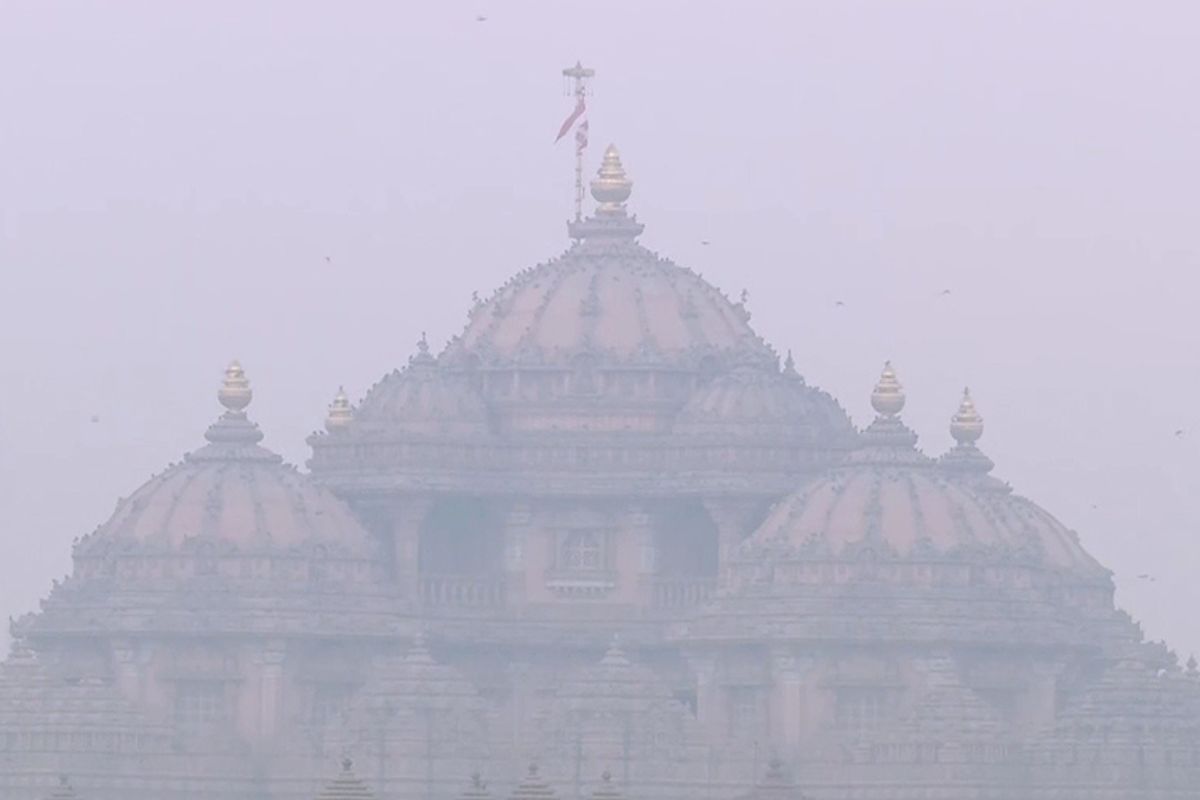With the air quality deteriorating further Delhi recorded an average Air Quality Index (AQI) at 378 on Wednesday, the Central Pollution Control Board’s (CPCB) daily bulletin on air quality said.
Ten areas in the city were found in the ‘severe’ zone with the AQI levels above 400.
Advertisement
The city air quality continued to be in the ‘very poor’ category for a week now, while the average index registered a spike of 23 points on Wednesday, as per data uploaded by the CPCB.
The Nehru Nagar area recorded the worst AQI reading of 426, followed by Wazirpur 425, Jahangirpuri 425, Vivek Vihar 422, and Anand Vihar 417.
Primary pollutants in the city’s air were the PM 2.5 particles, the CPCB data read.
The PM 2.5 microparticles are those pollutants that happen to be small enough to penetrate deep into the respiratory system and likely trigger health issues, as experts say.
Air quality data released on Wednesday by the CPCB was based on observations from the 35 out of 40 air monitoring stations across the city.
The Centre’s pollution control agency said prolonged exposure to air under the ‘very poor’ category may cause respiratory illness.
According to the Indian Institute of Tropical Meteorology (IITM), there is a likelihood of the air remaining in the very poor category for the next two to three days. “The air quality is likely to remain in Very Poor category from December 14 to 16. The outlook for the subsequent six days: The air quality is likely to remain in the Very Poor to Poor category,” the IITM said.
A drop in the wind speed was observed in Delhi, as per the IITM, which could be the cause of the little spike in the AQI level.
Meanwhile, the Indian Meteorological Department (IMD) has forecast shallow fog in the morning for Thursday with minimum temperature to hover around 6 degrees Celsius.
Anti-pollution measures like spraying of water along roads, mechanised sweeping, deployment of special teams at the 13 hotspots, deployment of anti-smog guns and other actions are underway in the city in accordance with the Commission for Air Quality Management’s (CAQM) Graded Response Action Plan(GRAP) stages-I & II that are invoked across the Delhi- NCR region.
Meanwhile, NCR cities sharing their borders with Delhi, including Faridabad and Gurugram, continued to register air quality levels in the ‘poor’ zone where AQI levels remained below 301, the CPCB said. However, air quality in Noida and Ghaziabad slipped into a ‘very poor’ zone, as per the CPCB.











